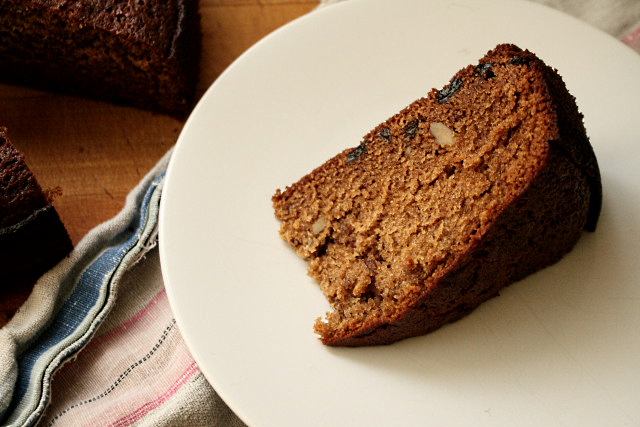This honey cake originated in Germany in the Middle Ages, and became a staple of the Jewish kitchen, finding a place as the traditional cake of Rosh Hashanah, the Jewish New Year. It symbolises a hope for a sweet and fruitful new year.
Many dismiss honey cake as one of those traditional staples that simply has to be made and served, regardless of the fact that nobody actually likes it, which reminds me of Christmas pudding. Does anybody really like Christmas pudding?
No?
Thought not.
Honey cake is often dismissed as either too dry, or unappetisingly moist. This version is neither – it’s fortified with coffee, a little rum and orange zest, packed with the flavours and spices of winter, and it keeps well.
Rosh Hashanah passed a couple of months ago, but our Christmas and New Year is coming up, and this cake makes a change from the ubiquitous fruitcake or mince pies.
Start with eggs and sugar … two large eggs and 200g of caster sugar, and beat them together with a whisk until they’re light and pale, then whisk in 125ml of vegetable oil, 250g of dark, liquid honey, two tablespoons of rum and 125ml of strong black coffee.
In another bowl, mix together 300g of plain flour, two teaspoons of baking powder, half a teaspoon of baking soda, a teaspoon of ground cinnamon, a quarter of a teaspoon of ground cloves and a pinch of salt. Grate the zest of an orange into the flour, too, and mix it together well.
Slowly add the dry ingredients to the wet ones, beating all the time with the whisk until everything is incorporated and turned into a thick batter.
Dust 40g of sultanas and 50g of chopped walnuts in a little flour and add them to the batter. The thin coating of flour is supposed to stop the fruit and nuts from sinking to the bottom of the cake, but I’ve found it to be of dubious effectiveness. You may have better luck.
Pour the batter into a 24cm cake tin, the base lined with greaseproof paper, and bake at 180c for at least an hour, perhaps up to an hour and a quarter. Check progress after fifty minutes and turn the heat down and cover the cake with foil if it seems to be browning too much.
The cake should be left for a day or two to let its flavours develop. It won’t go stale, but it will taste deeper, earthier and richer for the wait.
This recipe is from Claudia Roden’s brilliant The Book of Jewish Food: An Odyssey from Samarkand and Vilna to the Present Day.

